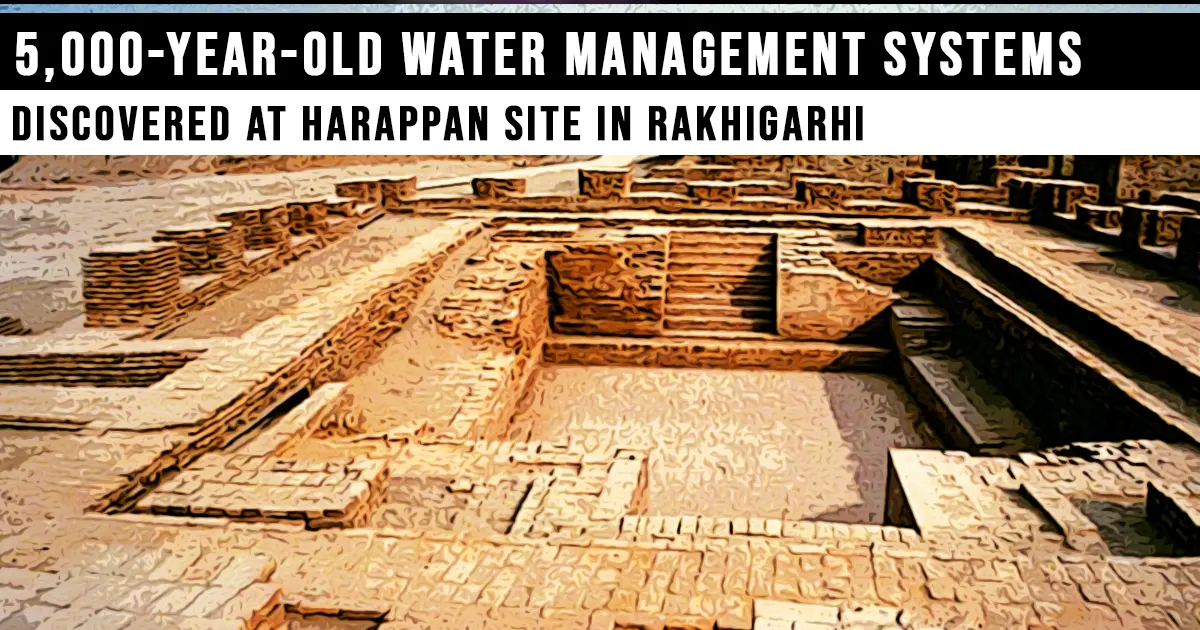GS1 – ANCIENT HISTORY

During an ongoing excavation, a water storage area between mounds was discovered, with an estimated depth of 3.5 to 4 feet, highlighting the advanced water management techniques of the civilization. Additionally, a dried riverbed of the Chautang (or Drishavati) River was uncovered.
Water Management Practices of the Harappan Civilization:
- Elaborate Drainage System: Major cities featured underground drains constructed with precisely laid bricks, connecting houses to larger public sewage drains.
- Small Bunds: In Lothal, Gujarat, local people built small bunds to collect rainwater for irrigation and drinking purposes.
- Dockyard: A well-structured dockyard in Lothal, near the Sabarmati River, showed evidence of water channels for the inlet and outlet of water.
- Channels and Reservoirs: At Dholavira, Gujarat, stone-built channels and reservoirs were used to store fresh water collected during rainfall or diverted from nearby rivulets, showcasing advanced hydraulic engineering for water conservation and storage.
- Tanks and Wells: In Mohenjodaro, rainwater was stored in tanks and efficiently transported to wells in each household via an organized drainage system.
- The Great Bath: A large brick tank at Mohenjodaro, possibly used for mass bathing during religious ceremonies, is an extraordinary example of ancient large-scale water tanks.
Rakhigarhi:
- Location: Situated in the Hissar district of Haryana, Rakhigarhi is one of the largest and oldest cities of the Harappan Civilization, located on the Ghaggar-Hakra river plain.
- Key Findings: The site has revealed numerous archaeological mounds, skeletal remains (which provided the only DNA evidence from the Harappan era), and evidence of craft areas, residential structures, streets, drainage systems, and burial grounds.




